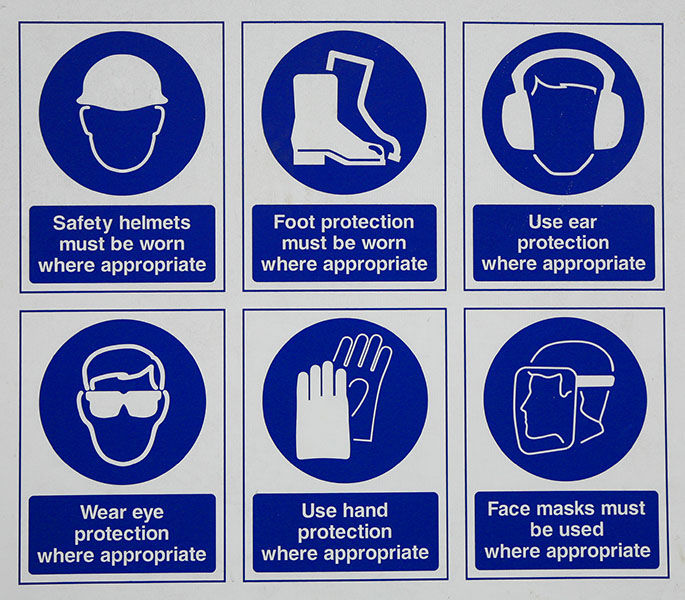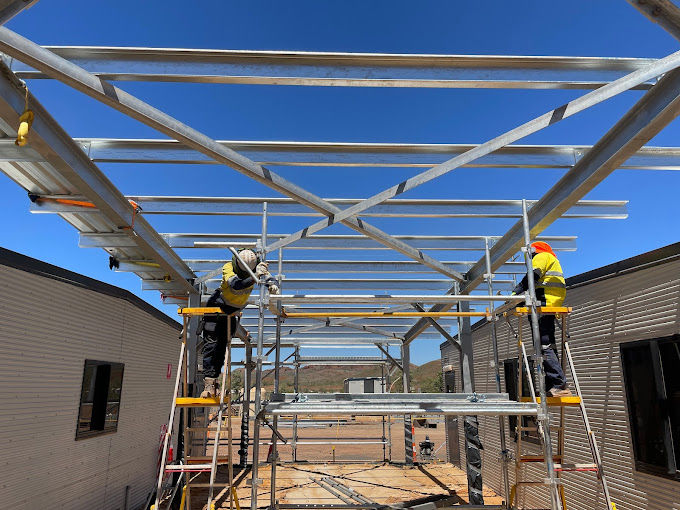
Introduction Essential Mine Site Safety Guidelines
Mining is one of the most hazardous industries worldwide, with workers exposed to a range of risks daily. From heavy machinery and explosives to unstable ground conditions and toxic gases, the potential for accidents is always present. That’s why maintaining strict safety measures is crucial in any mining operation. Whether you’re managing an open-pit mine or an underground site, ensuring worker safety should be your top priority.
This blog will take you through the essential safety guidelines for mine sites, focusing on hazard management, the use of personal protective equipment (PPE), safety training, and emergency response procedures. With the right strategies in place, mine sites can minimize risks, reduce accidents, and create a safer working environment for everyone involved.
Understanding the Main Hazards in Mine Sites
To build an effective safety plan, you first need to understand the specific hazards present in mining environments. Below are some of the most common dangers faced by mine workers:
1. Heavy Machinery Accidents
Mining operations rely on heavy equipment like loaders, trucks, and drills, which can be hazardous if not properly operated or maintained. Accidents involving machinery can lead to severe injuries or fatalities, especially in confined spaces like underground mines.
2. Ground Instability and Collapses
In underground mining, the structural integrity of the mine can change suddenly, leading to cave-ins or rock falls. Ground instability is a significant hazard that can result in trapped workers and fatal injuries.
3. Toxic Gas Exposure
Mines, especially underground ones, are prone to the accumulation of dangerous gases like methane, carbon monoxide, and sulfur dioxide. Without proper ventilation systems and gas detection technology, workers can be exposed to these harmful substances, leading to respiratory problems or poisoning.
4. Explosives and Blasting Risks
Explosives are often used to break apart rock formations, but they come with their own set of risks. Poor handling or miscalculations during a blast can cause severe injuries or even fatalities.
5. Slip, Trip, and Fall Hazards
Mining sites can be uneven, wet, or cluttered, making slips, trips, and falls a frequent occurrence. These seemingly minor accidents can lead to serious injuries, especially when working on elevated platforms or near deep pits.

Key Safety Regulations for Mine Sites
To mitigate these risks, there are strict safety regulations in place, both at a national and international level. In Australia, for instance, mining safety is governed by the Work Health and Safety (WHS) Act, with additional state-specific regulations like the Mines Safety and Inspection Act 1994 in Western Australia.
These laws require mine operators to:
Identify hazards and assess risks.
Develop a safety management system to address potential dangers.
Provide safety training and appropriate personal protective equipment (PPE).
Ensure proper ventilation and gas monitoring systems are in place, especially for underground mines.
Implement emergency protocols, including evacuation plans and first-aid training.
Essential Mine Site Safety Practices
Safety on a mine site is a collective responsibility, involving everyone from upper management to workers on the ground. Below are some essential safety practices that should be part of any mining operation:

1. Personal Protective Equipment (PPE)
One of the simplest yet most effective ways to reduce injuries is by ensuring workers wear the correct PPE. This equipment includes:
Hard hats: Protects from falling debris or accidental head injuries.
High-visibility clothing: Ensures workers are easily seen, reducing the risk of accidents with machinery.
Steel-toe boots: Protect feet from heavy objects and sharp debris.
Respirators and gas masks: Essential in areas with dust, fumes, or toxic gases.
Hearing protection: Helps reduce noise-induced hearing loss, especially when working around loud machinery.
2. Regular Safety Training
Training is crucial to prevent accidents and ensure that workers understand the risks involved in their jobs. Regular safety drills and training programs should cover:
How to operate heavy machinery safely.
Recognizing the signs of ground instability in underground mines.
Proper use of explosives and handling of dangerous substances.
Emergency evacuation procedures.
Basic first aid training for injuries that may occur on-site.
3. Effective Communication Systems
Good communication is essential, particularly in large mining operations where workers may be spread out over vast areas or underground. Implementing robust communication systems ensures that:
Workers can quickly report hazards or incidents.
Supervisors can monitor work progress and ensure safety protocols are being followed.
Emergency alerts can be communicated instantly to evacuate or stop work if a dangerous situation arises.
Many mining operations now use two-way radios, emergency alarms, and even smartphone apps tailored to industrial environments to improve communication.
4. Hazard Identification and Risk Assessment
Before any work begins, a thorough risk assessment must be conducted to identify potential hazards. These assessments should be reviewed regularly and updated as the mining operation progresses. Key areas to focus on include:
Identifying ground stability issues in underground mines.
Evaluating machinery for maintenance needs or wear and tear.
Monitoring air quality for gas or dust levels.
Assessing risks from weather conditions, particularly in open-pit mining.
5. Ventilation and Air Quality Monitoring
For underground mining, ensuring proper ventilation is critical to maintaining air quality and preventing the buildup of toxic gases. Continuous monitoring systems should be in place to detect gases like methane and carbon monoxide, providing early warning for evacuation if dangerous levels are detected.
6. Safe Handling of Explosives
If your mine site uses explosives, proper storage, handling, and use are non-negotiable. Only trained and certified individuals should be allowed to handle explosives, and all blasting should be carefully planned and coordinated. Always clear the area before any explosion to avoid injury or death from flying debris.
Emergency Preparedness and Response
Even with the best safety protocols in place, accidents can happen. That’s why it’s essential to have a well-planned and rehearsed emergency response system in place. This includes:
Evacuation Plans: These should be clearly communicated to all workers, with marked exit routes and safe zones.
First-Aid Stations: Equipped with essential medical supplies, first-aid stations should be strategically located throughout the site.
Emergency Communication: Workers should know exactly how to alert supervisors and emergency teams if an accident occurs.
Rescue Drills: Regular rescue drills, especially in underground mines, are essential to prepare workers for real-life emergencies like cave-ins or gas leaks.
Safety Technology in Modern Mining
Technology is playing an increasingly important role in mine safety. From drones that can inspect hazardous areas to automation reducing human exposure to dangerous tasks, here are a few technological advancements improving safety:
Drones for Inspections: Drones can be used to inspect unstable or dangerous areas without putting workers at risk. They can provide real-time images and data to identify hazards before workers enter a site.
Remote-Controlled Machinery: Advances in remote-controlled equipment allow operators to perform high-risk tasks like drilling and blasting from a safe distance.
Wearable Safety Tech: Some companies are now using wearable technology, like smart helmets or vests with built-in sensors, to monitor worker vitals, location, and environmental conditions, providing early warnings for hazards.

FAQs
1. What is the most common cause of accidents on mine sites? Heavy machinery accidents and falls are among the most common causes of injuries and fatalities on mine sites. Proper training and PPE can significantly reduce these risks.
2. How often should safety drills be conducted? Safety drills, particularly for emergencies like evacuations or mine collapses, should be conducted at least every six months, though quarterly drills are recommended for high-risk sites.
3. What should workers do if they detect dangerous gases? If dangerous gases are detected, workers should immediately evacuate the area and follow the mine’s emergency response plan. Gas detection systems should alert workers and supervisors to take action.
4. Is safety technology required on all mine sites? While not all technology (like drones or remote-controlled machinery) is mandatory, safety regulations require mines to use equipment and monitoring systems that ensure the safety and well-being of workers.
Final Thoughts
Mine site safety is a multi-faceted issue that requires constant attention, planning, and innovation. From using the right PPE to conducting regular safety drills, it’s essential for everyone on the site to be aware of the risks and the safety measures in place. By adhering to national regulations, providing adequate training, and investing in modern safety technologies, mining companies can significantly reduce accidents and create a safer working environment.
Safety isn’t just a compliance issue—it’s a commitment to protecting the lives of workers who brave some of the toughest working conditions in the world. With the right strategies in place, mine sites can continue to be productive while ensuring that everyone returns home safely at the end of the day.

Essential Mine Site Safety Guidelines



Comments